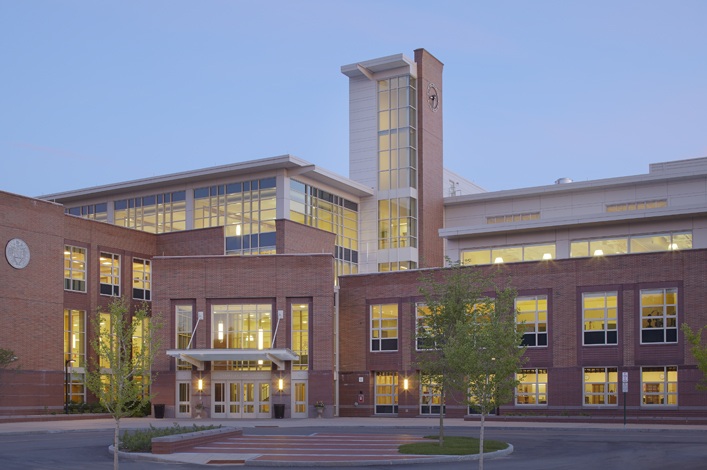In mid-September, an email was sent to Umass Amherst students that targeted Black students on campus as “lacking intelligence” and needing to be “sterilized”. Only a week later, the Wellesley community experienced its own online racial incident when a group of students sent racist slurs and derogatory terms on a social media platform called Discord.
The correlation between the two events was shocking to some, but to others like Principal Dr. Jaime Chisum aren’t surprised.
“It’s terrifying, really, the brazenness of it is alarming and somewhat not surprising, unfortunately given the division and tension in the country. It seems that more and more, there are people who feel like they are empowered to say the most horrific things,” said Chisum.
Similar to Dr. Chisum, David Fils-Aime ‘22 members of Young Ethnic Scholars (Y.E.S) agree. Y.E.S is an organization for students to discuss race within the high school community.
“I honestly wasn’t surprised because this stuff happens all the time. Of course I was frustrated, but it’s no shock. Our sibling who goes to UMASS kind of just brushed it off because that’s just how frequent this stuff happens.” said Fils-Aime member of Young Ethnic Scholars (Y.E.S), an organization where students discuss race within our community.
Not long after, on October 8, another racist slur directed towards a black student was brought to the attention of the administration. Many students have expressed concern and disagreement for the terms used by the administration to describe the incidents. They claim that the term “hate crime” should be used to captivate the truthfulness of what happened.
Much of the student body has pointed out that the way the administration addresses these issues could be one of the reasons why it hasn’t taken much effect. Some students described ambiguity in emails or announcements, leaving the student body questioning more about what really happened. Some want to hear the whole story while others believe that the school isn’t bringing enough attention to the issues.
It’s been hard for students to bring up these issues to the administration due to a seeming, “remove” or disconnect between the staff and student body.
“With the disconnection from the administration… I feel like it makes People of Color have to fight for themselves instead of asking teachers or the administration as a whole for help.” said Bright Okunbor ’23, a member of Y.E.S.
Though leaving out certain pieces of information is for legal reasons, such as consequences, or the fact that everyone involved is a minor. The administration is looking to find new ways to inform and encourage students to speak up more about these issues. Chisum, who’s been attending professional development for eight years says that he doesn’t think he’s doing enough for his community, as these events continue to happen.
“You gotta keep trying to find new ways to teach the lesson and new ways to get in and new voices for them to hear,” said Chisum.
The administration plans to branch out to other community members and organizations to “deepen conversations about race.” Administrators and the community as a whole typically believe that the first step really lies within the students themselves. In reality, students are the first ones to see and hear these things. In fact, many students know more about these events than the faculty at school, and it is within their control to speak up about them. Although there’s been a lot of talk, many students contend that there has not been a lot of action. Bradford however, plans on using its media advantage to cover more on the topic of racism and bring awareness to the school community.
Chisum believes racism starts with what is being taught outside of school.
“The people who send their kids here, they create the student body that you’ve got. And so, what is it that they are doing to create the student body that walks into the doors and thinks that this language is ok?… Most kids here are awesome kids with good hearts who are not interested in being racist, who do not want their community hurt… but we need to activate that,” Chisum said.
Research shows that having conversations among students themselves have been far more effective than teachers at educating and stopping racist language. The research suggests it could be due to the trust and close relationships built over the course of their school experience.
A wide range of people believe that a sense of community and belonging at the high school is one step to becoming closer and more understanding of our differences.
“Change won’t start until we are all each, individually ready to assume our respective roles in the culture here, to recognize that we are Wellesley High School… and until we are ready to say this is our community,” said Mr. David Charlesworth, an English teacher at the high school.
To many people, including Fatima Sillah ‘23, the idea of community is ever-changing, and the word itself means many different things.
“I know there’s communities within communities rather than just one altogether,” said Sillah.
People tend to stay within their own groups and communities. They stick with people that share the same interests, hobbies, and maybe even who are of similar ethnic and racial background.
Though sticking with communities comfortable to you is no problem, possible misunderstandings and lack of knowledge for different communities can take place.
Racism is an ongoing issue in our world today and we can see the constant disagreements that arise from the roots of it.
“.. There’s not one idea that’s going to make that happen. It’s not like we’re going to have an assembly and somebody’s going to say this magic line and the scales are gonna fall off their eyes and everyone is going to understand it. We’re gonna walk back here holding hands and it all is just going to be fantastic. I don’t believe that’s going to happen… it’s not reality…” Dr. Chisum says.

